If there’s anything we learned from the reality show Man vs Wild, it’s that if you happen to be alone in the unlivable wilderness, you gotta have a fair share of survival hacks at hand. Things like: life begins and ends with duct tape, snares are your friends, or the PRWF acronym (Protection, Rescue, Water, Food).
And even if the chances that you and I will ever set foot in the Siberian taiga and will have to survive on eating insects and roots are pretty low, knowledge is power, and survival knowledge is the iron pump of it.
But according to this thread posted on r/AskReddit, not all the common survival tips are actually that useful. People argue that many can do more harm than good, so common sense, a rational mind, and fact-proofing have to always come first. “What is a survival myth that is completely wrong and could get you killed?” the Redditor Standardgenre45 asked people, and the responses flooded in.
Take them with a pinch of salt, or a bag too, or best, scroll down through our in-depth interview with Tony Nester, a survival instructor and multiple-book author who has been teaching wilderness survival and bushcraft courses for the past 30 years. Nester has worked with a diverse range of groups and folks from military special operations units to the Ojibwa Tribe, the Discovery and Travel Channels, and served as a consultant on the film Into the Wild. He happily shared some amazing survival tips and busted some common myths, so take out your notebooks, everyone!
#1
Perhaps not really a myth, but something people may think is true after watching people get rescued from the water on TV. “get them breathing and send them on their merry way”
If you rescue someone from a near drowning, they still need to go to the hospital, even though they are safely on land now.
The lungs are coated with a slippery mucous like substance called a surfactant. It’s kind of a lubricant and it keeps them from collapsing and sticking to themselves. If they ingested a lot of water into the lungs, chances are they have washed away the surfactant. Their lungs could collapse at any moment and their ability to uptake oxygen is reduced. Get the survivor on oxygen.
source: rescue trained scuba diver here.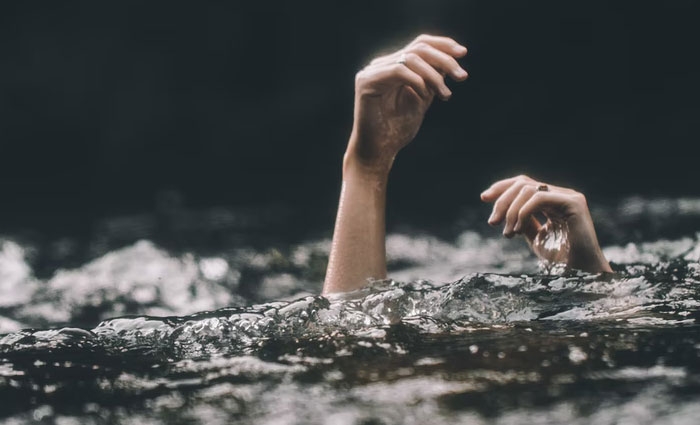
Image credits: EatDiveFly
In order to find out more about survival techniques and myths about them, Bored Panda reached out to Tony Nester, a famous outdoor survival instructor and multiple book author who shared an in-depth glimpse into what we actually need to know in order to survive out there.
“For the past 30 years, I have made my living teaching wilderness survival and bushcraft courses in Arizona and Colorado as well as around the U.S.,” Nester told us. He grew up in Michigan and had a lot of mentors in the outdoors, eventually working in the adventure education field while getting his BA in anthropology. Eventually, his path took him on to “guiding extended desert survival treks which led me to a love of the Southwest.”
“It’s my goal to provide both practical skills and field-tested information so hikers, explorers and backpackers can have some self-reliance methods to fall back on in case they are ever lost, injured in the backcountry or just run into Murphy’s Law out in the wilds,” he said.
#2
I don’t know if this counts as survival myth but you don’t actually have to (and probably shouldn’t) wait 48 hours to report someone as missing. Those first hours are crucial so report someone as missing immediately.
Image credits: SalFunction12
#3
Not so much a survival myth but a common camping mistake that an amateur survivalist might make: never use rocks that are in or close to a river bed for a campfire. Ever. Many get tiny bits of water trapped inside the rocks, then when heated by a fire, it turns into a lovely grenade due to the water being heated amd turned intosteam, expanding quickly. Hot bits of rock everywhere. People like river rocks because they are smooth and easy to cook off of and they look cool, but they are crazy dangerous. Plenty of rocks all around. Find another.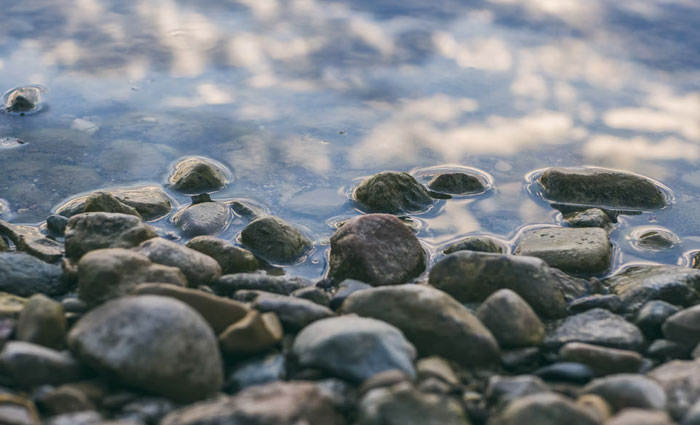
Image credits: ascootertridingataco
#4
If you’re wandering in the wilderness, wondering if the plants and water are safe to eat and drink, watch what the animals do. they will show you the safe plants and water.
spoiler: this is not true. many animals are evolved to consume things that are poisonous to us, or nutritionally valueless.
case in point: vultures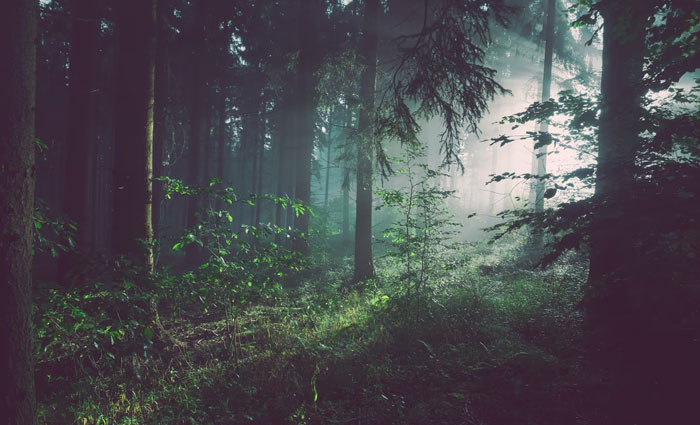
Image credits: eslforchinesespeaker
It turns out that 80% of the folks who get stranded or lost are dayhikers. Because of that, Nester focuses on what he calls the Big 5 Survival Priorities of Shelter, Water, Fire, First-Aid, and Signaling. “Planning for these areas and having the right type of items in your survival kit will help you endure a 24-72 wilderness mishap until searchers can locate you,” he added.
Nester also teaches 3-7 day bushcraft courses which focus on both modern and traditional skills such as edible plants, tracking, axmanship, land navigation, friction firemaking (“not what you want to do when you’re lost, so carry a lighter and matches!” he warned), and woodcarving skills.
“By their nature, these skills involve more time developing a connection to the landscape and understanding the bigger picture of how humans always directly relied on the natural world to meet all their needs. Where survival is about coping with a backcountry emergency and gutting it out until the search party arrives, bushcraft is about using a handful of traditional tools and methods for forging a deeper relationship with the wilds and how we have always depended on the land.”
#5
If a bear finds you, run down hill. They can’t run down hill.
I have to imagine some ass**le started this when he wanted to watch his other ass**le friend get mauled to death. They can absolutely run down hill and they are SHOCKINGLY FAST. They can also run up trees terrifyingly fast as well.
FYI the mama bear thing really applies to brown bears. Black bear attacks are incredibly rare and usually only from hungry and/or aggressive males. I’ve done a lot of wildlife photography of bears and I’ve spoken to a lot of wildlife biologists about this. When I photograph black bears and their cubs they are very docile. If something or you spook them, they will chase their cubs up a tree and then guard the bottom of the tree. They won’t attack you. If it’s a male black bear they’ll likely wonder on but always keep distance. If you encounter a black bear make as much noise as possible and make yourself seem as big as possible. If you encounter a brown bear start very slowly backing up. Never run away and never turn your back. If it’s going to attack you and there’s nothing nothing can do, lay on your stomach with your hands over the back of your neck and play dead. They primarily attack when they are surprised or threatened. If the surprise/threat is gone they will most likely move on.
But please for the love of God never run away and never climb a tree.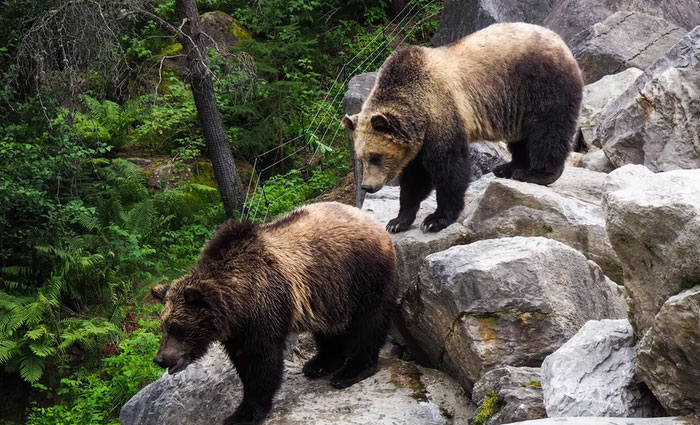
Image credits: Siriuxx
#6
Rationing water is generally a terrible choice – drink what you have until it’s gone. Use that time with good hydration levels to take stock of your situation and make good choices.
Decision making and physical ability drop off very quickly when you are dehydrated. The first decisions you make after realizing you are in a survival situation are critical and pay long dividends.
Most survival situations are resolved within 72 hours and many hikers are found dead in the desert with full water bottles.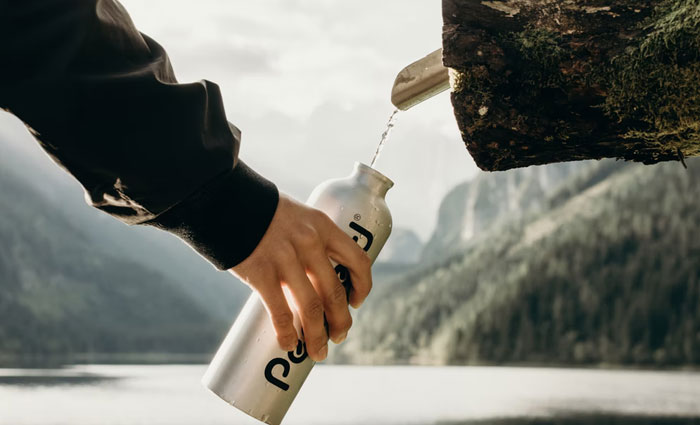
Image credits: RangerActual
#7
If trapped/lost in snowstorm while driving: A) Do Not Leave Your Car. You are literally inside a shelter ALREADY. A SHINY one! It is easier to spot a snow-covered vehicle, than a snow-covered corpse.
B) Do Not Keep Your Engine Running. It’s a snowstorm, your exhaust will block, you will nap. Snugga-bugga, you’re dead. Wait for storm to pass, check exhaust is clear, run engine in short bursts.
C) If you have ignored these steps, and are now walking in the snowstorm, because your sense of direction is “flawless”, Do Not Remove Any Clothing Layers! You WILL believe you are getting Hot. You WILL rationalize it’s from burning calories. You WILL die. The “Hot” feeling is you losing body temp. You are now slooooowly dying. If you still have your wits, retrace your steps and head STRAIGHT back to your car.
Wait for rescue.
Image credits: davidvidalnyc
When asked what are the three key survival skills to survive in the wilderness by yourself, Nester started off with “an attitude.” He explained: “Assuming you haven’t suffered a grievous wound or injury and need immediate attention, mindset is key and I always stress the critical concept of PMA… Positive Mental Attitude, which has gotten many survivors throughout the world out of grueling situations, despite them not having any training or gear.”
#8
In Australia at least, you do not need to identify or try to catch the snake that bit you. The antivenin is universal.
Image credits: harrymurkin
#9
Don’t drink water from cactus, it’s not potable and likely to trigger vomiting/diarrhea and you will get more dehydrated.
Image credits: Ehzabeth
#10
Most people probably are aware of this, but if you’re legit suffering from diarrhea, you need to be doing more than just drinking water because you’re also losing a lot of salts/electrolytes and not replenishing those can really f*ck you up.
You can make a pretty basic Pedialyte/Gatorade at home from adding 6 teaspoons of sugar and a half teaspoon of salt per liter of water. It won’t taste super great, but you can throw in other flavorings to mask it like lemon juice or similar.
I did peace corps in a tropical region and most of the volunteers came to dread the inevitable parasite/gi infection episodes not just because of being incredibly sick but also because of having to drink liters and liters of ORS, which is peace corps’ preferred pedialyte knock off haha.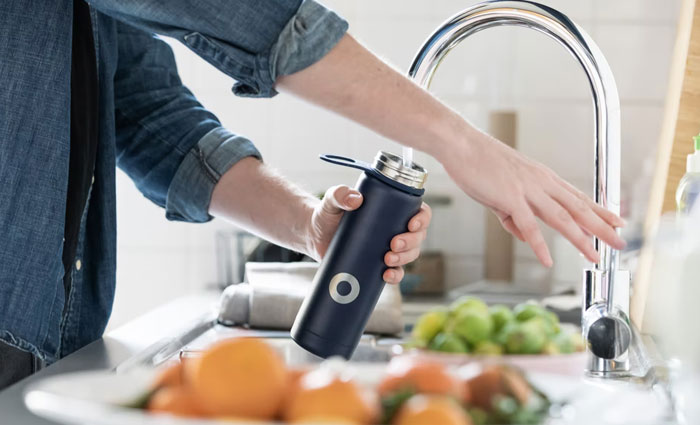
Image credits: cardamom_poppies
“Simply put, this is the will and desire to endure a brutal night in the wilds. There’s nothing fun or romantic about being lost or surviving by yourself and it all boils down to having a reason beyond yourself to live. In interviews I’ve done with real-world survivors over the years and reflecting back on my own close calls, it’s become apparent that having One Thing to live for is key… your kids, spouse, dog, parents, or your faith is what will galvanize your willpower and help you deal with that fractured ankle while the cold rain is coming down and the night is upon you!”
And with mindset comes the need to plan and prepare before your hike, Nester said. He suggested telling someone exactly where you are going and when you will return, checking out the weather forecast, and carrying a quality survival kit to handle those Big 5 priorities.
#11
If you get caught in a forest fire, that you can survive by finding a big depression, or cave and waiting for the flame front to pass. You’ll die from suffocating as the fire consumes all the oxygen. You have a much better chance of running through the flame front. Protect your eyes, face, and especially your airways, cover as much of your skin as possible. The main things are to protect your eyes, mouth and nose. Pick a line with the least obstructions, and where the fire will burn less intense. Close your eyes, take a deep breath and run, you’ll know once you’ve made it through. Most people will gasp or try to breath in once they hit the flamefront, that’s why you gotta protect it, otherwise you’ll take in a breath of super heated air, instantly blister your lungs and drown in your own bodily fluids.
Image credits: scoopdiddy_poopscoop
#12
For the love of god do not eat everything raw.
If I see another episode of Bear Grylls eating a bat or bird as raw as sashimi, I think I’ll go crazy.
You should absolutely try your best to cook the food you’ve nabbed. Even if it’s through an open fire for a few minutes. Eating, say, a dead bird that may or may not have bird flu is a hell of a lot worse than creating a fire to cook it over. Congrats for completely screwing yourself by eating raw wild meat!
Image credits: mjohnsimon
#13
Alcohol does not warm you up. You feel warm since its dilating your blood vessels in your face and extremities but that causes you to lose more heat to the environment and therefore will make you die of hypothermia quicker if anything.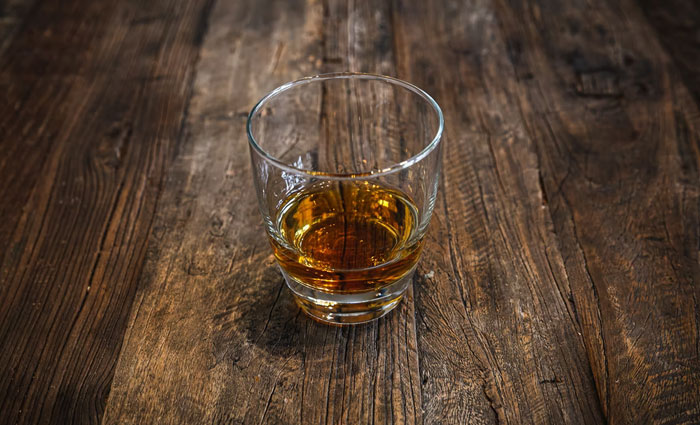
Image credits: bobbi21
The second key thing to survival is sheltermaking. “Hypothermia is the number one killer of people in the outdoors the world over and most cases happen in 50 degree F weather. Carry an AMK Heatsheet, a 5×7 blue tarp and 25’ of rope (big-box hardware stores carry these), and wear layers, then learn how to rig up your tarp to keep you out of the elements. Practice tying the timber-hitch and the half-hitch as these are very simple to remember and great for lashing a shelter in place,” Nester said and reminded that “your first shelter is your clothing, so avoid 100% cotton and wear fleece, wool, or other garments that will keep insulating even when wet.”
#14
Wait until you hear the freight train sound to go to the tornado shelter.
I was always told as a kid, if you can’t hear it you’re alright. At 20 years old I was caught out in the woods with a few friends thinking we had 10-15 minutes to get back to the truck after the tornado warning went out. 3 minutes after the warning we heard what sounded like a freight train and this loud hissing sound. Like a thousand rattlesnakes. Within 30 seconds we were watching trees get plucked up into the air.
We all made it out alright. Luckily there was a large ravine that was dry that time of year and we scrambled into it and flattened out gripping to each other and rocks for dear life.
It took 30 seconds from the time we realized it was in front of us till it was ontop of us.
Later in life I watched a F3 touch down. Because how tornados spin and the earth spins, and I was traveling at 75mph down a highway. I thought I was running along side it. About 1 mile from it. I couldn’t hear it, I could see trees and barns going up into the air with it. I never realized it was coming towards me at about 30mph. By the time I heard it and felt a pressure change inside the cab of my truck I had no choice but to bail out and run into a culvert along side the interstate. This all happened within 60 seconds. If you’ve already heard the tornado. You need to be in your shelter. Not heading towards it.
A tornado watch is an advisory to be watching for tornados. It means it is highly plausible for a tornado to form and touch down. A warning means a radar indicated tornado has touched down and possibly even been spotted by human eye. If you cannot get in doors, get as low as you can.
I have made a habit, as soon as a tornado watch is released in my county, my go bag, the diaper bag, the kids stuff they WILL need all goes in a large duffel in the storm room. I’ll watch velocity radar like a hawk until the watch is cleared. If it is elevated to a warning we all pile in. Tornados can drop out of the sky right on top of you in under a minute, leaving you with little to no reaction time.
#15
Myth: When hiking in Grizzly country, a handgun is the best way to protect yourself from grizzlies.
That’s absolute bullsh*t. Bear spray is far more effective then any gun in a bear attack. Imagine a 600 pound bear charging you at 35 mph. How good of a shot do you think you’d have to be to stop that bear before it gets to you? And what if you don’t kill it one shot? That bear now has adrenaline rushing through its body on top of its already insane strength.
Bear spray, however, will stop that bear and cause it to run off. All of the studies show that bear spray is far more effective at stopping charging bears.
#16
Punching a shark in the nose.
Have you seen a shark nose? Its slippery and angles down into three rows of teeth!
Go for the eyes if you need to but mostly avoid acting like a wounded seal! If you flail around like “ahh f**k its gonna eat me”
The shark will feel obliged to do so
“ahh f**k I guess I’ll eat you”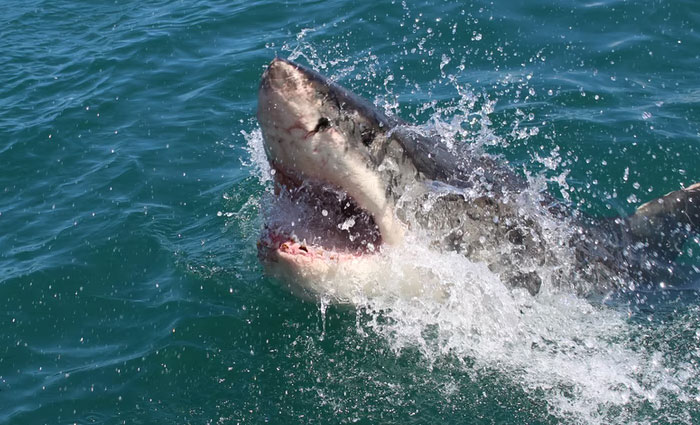
Image credits: KrazieKanuck
The third crucial step to survival is the ability to signal, Nester told us. “You are a tiny speck on the landscape to searchers, so carry a 3”x5” glass signal mirror (and know how to use it… it takes mere minutes in your backyard), a whistle, flashlight in addition to using your cellphone’s strobe feature.”
For longer trips, Nester will carry an ACR Personal Location Beacon which is recognized by search-and-rescue units throughout the US and many parts of the world. “This device can send a signal to the nearest search unit in your region and pinpoint your location,” he said.
“Given that a lot of the Western US is a tinderbox for much of the year, I don’t recommend signal fires, so carry some of the above gear and you’ll be able to draw attention to you. If you break down by your vehicle, then use your headlights and horn and spread items out in a large circle around your car to make it obvious you are stranded.”
#17
Do not try to leave a deserted island if you are stuck, you will almost certainly die before someone spots you.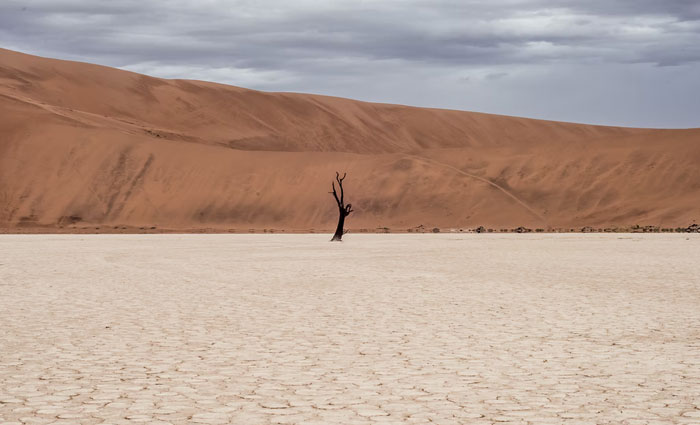
Image credits: Slavic_bumpkin
#18
If you get stabbed by something, DO NOT try to remove the object. You will make it worse and potentially bleed to death, depending on where you were stabbed, if you try and pull it out. Leave it be and get help.
Image credits: fall_and_green
#19
Don’t tie a rope around your waist and expect it to save you from a fall. Sure, it might prevent you from hitting the ground, but you can still damage your internal organs and break your back doing this. Safety harnesses go around your hips and legs, not your waist.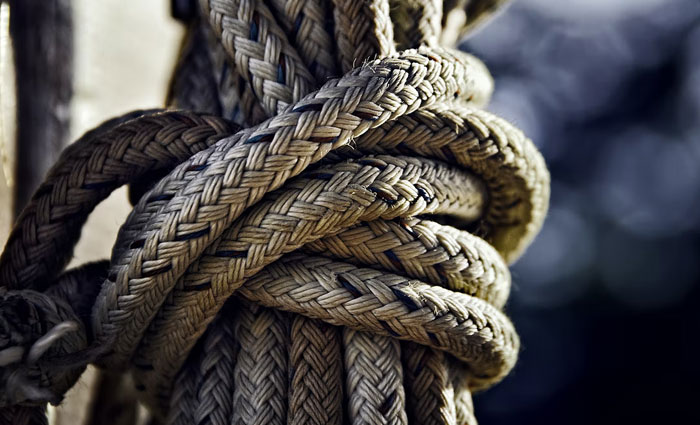
Image credits: nowhereman136
We also wanted to find out what are the most common survival myths that are actually wrong, and the survival instructor shared a couple of them. “I get asked this all the time: ‘can you really cut open a cactus and get fresh water?’ No, all cacti are high in alkaloids, which will make you extremely nauseous and cause you to vomit, thus further dehydrating you in a desert environment. And out of the five barrel cactus in the desert, there is only one that is non-toxic… the fishhook barrel.”
Turns out, Nester has tried using the latter in the past under non-survival conditions after obtaining cactus that have been blasted over cliffs after flash floods. He recounted that the soupy substance inside is akin to a watery Elmer’s Glue. “Not only did I have to meditate like a monk to keep it down but, by adding a noxious substance to my body, I was pretty nauseous the rest of the afternoon which greatly affected my ability to hike even short distances.”
#20
If you’re driving during a tornado warning, don’t get out of your car and climb up the side of an overpass to hide under a bridge. This myth became famous after amateur video of a man and his daughter hiding under an overpass, but the one they chose had some unusual construction that offered them protection in a way most don’t. Wind speed increases the higher you get from the ground, and the narrow passages can create a wind tunnel effect, taking the flying debris picked up by the tornado and sending it straight through you at 200 mph or more.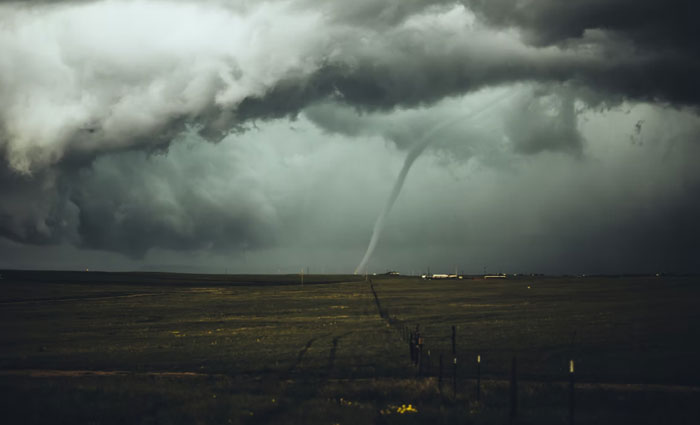
Image credits: SanibelMan
#21
1. You need to be quiet.
2. You can draw a can of bearspray faster than…
So. MANY. Post about “Mountain DJs”, reality is, if you hike alone in Bear or Mountain Lion Country you absolutely should be noisy. Carry a noise device and be loud. If a speaker, for sure, mute it around others. But something. Whistle. Air Horn.. Speaker. Don’t matter. Need to be noisy when alone at regular intervals.
#22
Everyone focuses on food and water but completely underestimates how quickly exposure will kill you dead. In some cases, you wont last 24 hours.
Bonus addition to this: every guide i have ever read says to make fire first. Making fire is f*cking hard sometimes. There are many environments where you flat cannot guarantee a good fire (deserts, because of lack of fuel and anything especially wet).
If you get halfway through the night and realize you cant make fire, you are going to have problems.
So make shelter. You can ALWAYS guarantee a shelter and insulated sleeping spot. Make sure your bedding is at least 4 inches thick when you lay on it. I guarantee youll underestimate just how bad the ground sucks the heat out of you.
Make your shelter as small, thick and weatherproof as possible.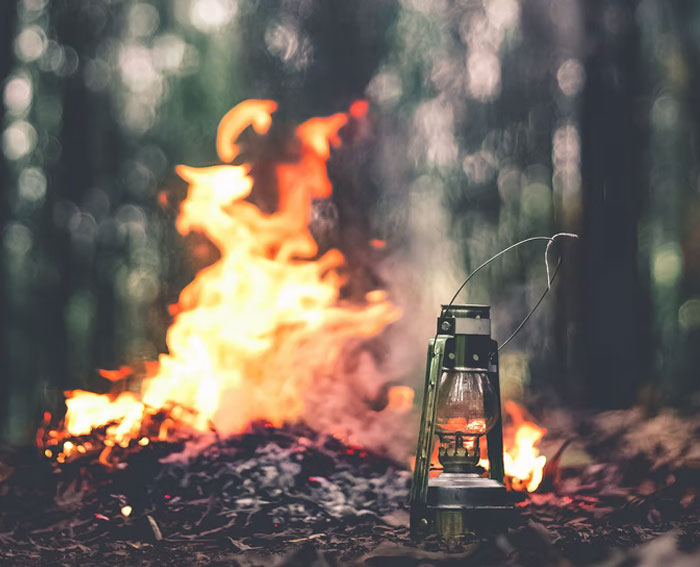
Image credits: Tru3insanity
“The other misconception comes with living off the land. Many of my students assume that it’s similar to pushing a cart through the produce aisle but it takes a considerable knowledge of edible plants (and those poisonous lookalikes), fishing skills and tackle, an understanding of wild game and their tracks, hunting know-how and a lot of time out on the land applying your skills,” Nester explained.
“So, if you are ever lost, stay put and await rescue rather than burning up precious calories searching for wild berries or that elusive trout, and remember that survivors have gone 43+ days without food.”
#23
Building a raft to sail to civilization if you ever find yourself marooned on a deserted island. Stay on the island and be found alive vs never found or found dehydrated and dead of exposure.
Also walking to safety if you get lost and your car breaks down. Stay with the vehicle. They always find the vehicle. It’s inhabitants… not so much.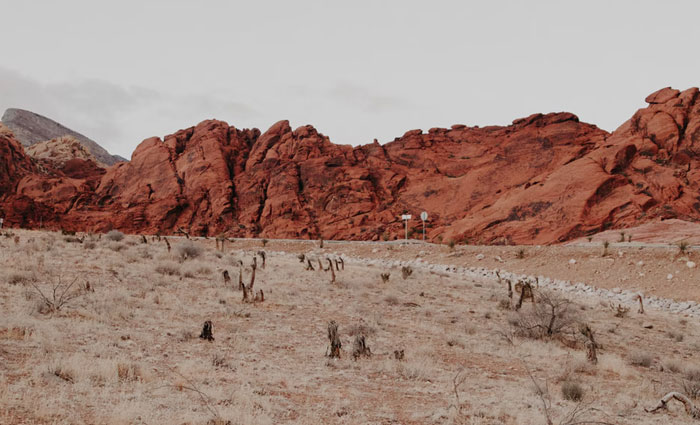
Image credits: rowman25
#24
“Follow flying birds to find water.” They could be flying anywhere.
Image credits: C_IsForCookie
#25
If Bear Grills does it, don’t do it.
If Survivorman Les Stroud does it, consider doing it.
The last misconception is about water requirements. Nester explained that “the range for surviving without water is anywhere from 4 hours to 11 days, depending on what geographic region you’re in, time of year, your physical conditioning, elevation, wind, air temperature, and humidity.”
The survival instructor said that in his desert survival courses in May, they’ve been known to consume 2-3 gallons of water, per person per day. “By comparison, in the mountains, we might only drink 2-3 quarts. Research from the Grand Canyon indicates that you can survive up to 48 hours without water if you stay put, stay in the shade, stay off the hot ground and await rescue rather than burning up your precious sweat trying to locate water (it’s a desert, remember…).”
#26
Lightening doesn’t strike the same place twice. Lies. Obviously the person who coined that phrase didn’t live in Florida.
#27
Here’s a good one: If you’re in an elevator in freefall, DO NOT JUMP. It won’t make your landing easier, it’ll probably paralyze or kill you. Lay yourself flat to try and distribute your weight (as well as the pressure of the crash) more evenly. You’ll give yourself a better chance at survival this way.
I mean, it’s an elevator, so no guarantee you’ll survive, but still small chance is better than none!
Image credits: NuckingFutsWinx
#28
Taking off all your clothes and snuggle with someone to prevent frostbite or hypothermia.
This does not work, you’ll just be found dead and naked.
It is great for survival of the species though.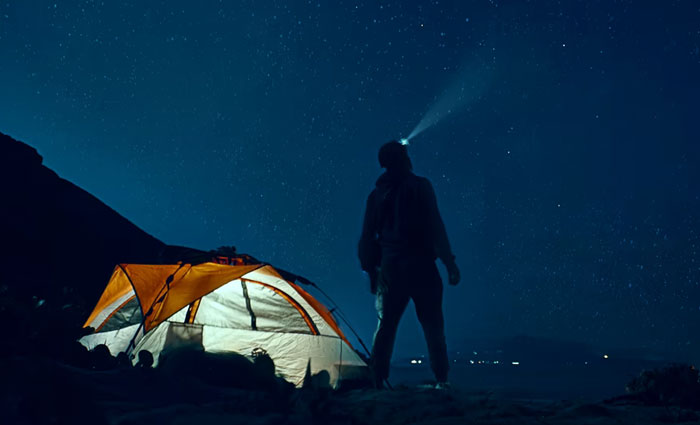
Image credits: RavennaMagnus
Nester concluded that “most people who get lost in the wilds suffer from the Dayhiker Syndrome, meaning they think: “I’m just going on a short walk, or out for a few hours with the dog, or I’ll only be a few miles from home. It’s the decisions made on the couch at home before the trek that often get people into trouble since they don’t leave a travel plan or bring adequate (or any) gear with them.”
“It always starts with this little disaster-cascade of poor decisions that often leads to someone being stranded in the wilds, so Leave a Travel Plan with someone back home and always carry a small survival kit to take care of those Big 5 Priorities,” he told Bored Panda.
#29
DO NOT DRINK YOUR PISS!!! I don’t give a sh*t what Bear Grylls says…
Albeit, you can briefly drink your piss before getting sick, but urine is literally your body flushing out toxins from your squishy innards. Relying on drinking urine will make you more dehydrated than before, get you extremely sick i.e. fever, infection, etc. and can lead to kidney and liver damage/failure so as a survival myth it’s probably one of my favorite to see people try.
Image credits: westglade
#30
after getting bitten by a snake trying to suck out the venom, do not do that, by sucking the area of the bite your blood flows faster and increases the speed off the venom acting on your body, it’ll just get to your heart quicker and kill you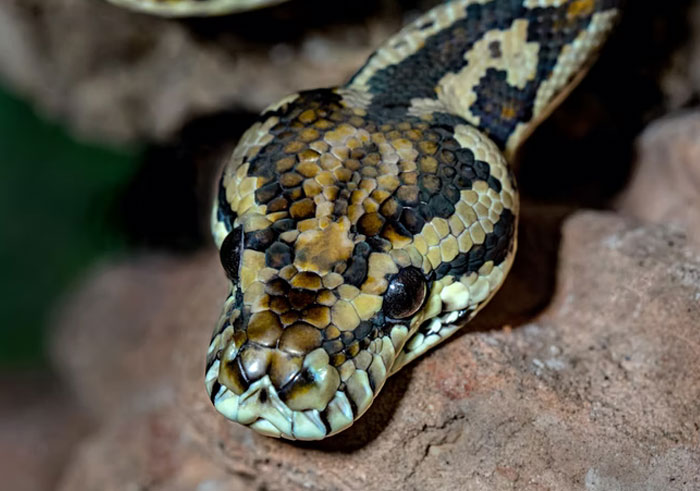
Image credits: JakeRyback18
This content was originally published here.

